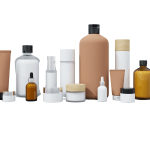Micellar Water and Eye Safety
Micellar water has become a staple in skincare routines across Canada. Celebrated for its gentle cleansing properties, no-rinse convenience, and ability to remove makeup and impurities, micellar water is widely marketed as a safe, everyday product. However, recent safety information from the Canadian Surveillance System for Poison Information (CSSPI) and Canadian Poison Centres has raised an important eye safety concern that both consumers and brands should take seriously.
What is Micellar Water?
Micellar water is a mild, no-rinse cleansing solution made from purified water that contains tiny clusters of molecules known as micelles. These micelles have a unique structure, with one end that is attracted to water and another that attracts oil, allowing them to capture and lift away makeup, dirt, and excess oils from the skin. This makes it easy to remove impurities simply with a cotton pad, without harsh scrubbing or rinsing. Thanks to its gentle yet effective cleansing action, micellar water has become a favorite in daily skincare routines for refreshing the skin or removing makeup quickly and conveniently.
Safety Concerns
Between January 2020 and June 2025, Canadian Poison Centres reported 29 cases of accidental ocular exposure to micellar water. The reported symptoms included redness, irritation, soreness, stinging, and blurred vision. In a striking 41% of cases, individuals were referred to a Health Care Facility, and some required an urgent ophthalmology consultation.
In most cases (over 70%), the cause of these incidents was a consumer mistaking micellar water for contact lens solution. Other exposures occurred during typical cosmetic use when the product accidentally entered the eyes. These findings underscore the need for careful product handling, consumer education, and robust labeling strategies to prevent similar incidents in the future.
Why Micellar Water Can Cause Ocular Irritation
Even though micellar water is designed for gentle skin cleansing, the ocular surface is particularly sensitive. The cornea, conjunctiva, and tear film can be easily irritated by surfactants, preservatives, and fragrance agents present in cosmetic formulations. Laboratory studies show that certain preservatives, such as benzalkonium chloride, may harm epithelial cells at higher concentrations or with repeated exposure. While well-formulated micellar waters are generally tolerated by the skin, accidental contact with the eyes can lead to significant discomfort and often require medical attention.
Recommended Action for Brands and Manufacturers
It’s recommended that manufacturers consider implementing proactive strategies to reduce the risk of ocular exposure:
- Consumer education: Clearly communicate the correct use of micellar water to reduce the likelihood of misuse. Include warnings about potential confusion with contact lens solutions.
- Packaging improvements: Design containers to differentiate the product from other eye solutions and provide controlled dispensing.
- Labeling enhancements: Include prominent warnings about avoiding direct contact with the eyes and add instructions on proper first aid if exposure occurs.
- Post-market monitoring: Track consumer complaints, and adverse events to quickly identify emerging safety issues and adjust products or communication accordingly.
Brands that implement these measures not only protect consumers but also demonstrate regulatory compliance, corporate responsibility, and product stewardship, reinforcing trust in the Canadian marketplace.
Regulatory Implications in Canada
Cosmetic products sold in Canada are regulated under the Food and Drugs Act and Cosmetic Regulations, which require that products are safe when used as intended. While micellar water is considered low risk for skin use, ocular incidents highlight the need for continuous safety monitoring and risk mitigation strategies. Health Canada encourages brands to take proactive measures to reduce harm and ensure that consumers have accurate information to prevent accidental exposures. Compliance with these recommendations helps brands avoid potential regulatory scrutiny and maintain consumer confidence.
Key Takeaways
The CSSPI and Canadian Poison Centre reports serve as a reminder that even products considered gentle, like micellar water, can pose risks if misused. Accidental ocular exposure can result in discomfort, blurred vision, and in some cases, urgent medical attention. Manufacturers can reduce risk to consumers through clear labeling, thoughtful packaging, and proactive monitoring.
Call to Action
If your organization is looking to strengthen cosmetic product safety, ocular exposure mitigation, or Health Canada compliance, Dell Tech can help. Our experts provide end-to-end support for risk assessment, labeling review, post-market monitoring, and regulatory guidance.
Reach out today to ensure your products are safe, compliant, and continue to be trusted by consumers across Canada.
DELL TECH HAS PROVIDED PROFESSIONAL, CONFIDENTIAL CONSULTING SERVICES TO THE SPECIALTY CHEMICAL INDUSTRY IN CANADA, THE USA, EUROPE AND ASIA FOR THE LAST 40 YEARS.





